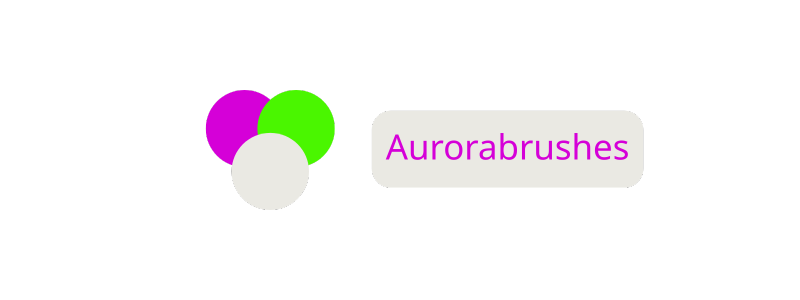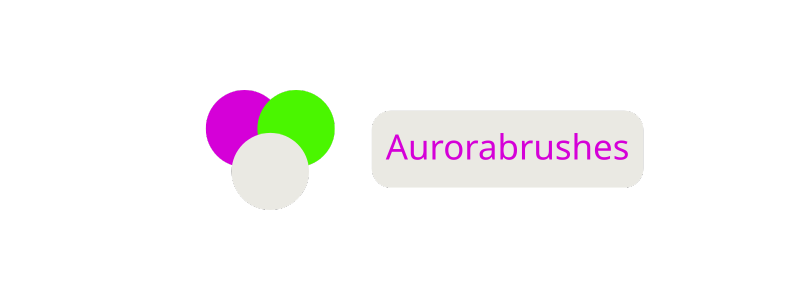Is Webflow Good for Ecommerce? Detailed Review of Features, Pros, Cons & Best Use Cases
When I first started exploring options for building an online store I kept hearing about Webflow. It’s known for its sleek design tools and flexibility but I wondered if it could really handle the demands of ecommerce. With so many platforms out there choosing the right one can feel overwhelming.
I’ve seen firsthand how the right ecommerce platform can make or break a business. If you’re thinking about launching an online shop or switching platforms you probably want something that’s easy to use yet powerful enough to grow with your business. Webflow promises a lot but does it deliver when it comes to ecommerce? Let’s dig into what makes Webflow stand out and whether it’s the right choice for your online store.
Overview of Webflow for Ecommerce

Webflow offers a browser-based platform enabling ecommerce website creation with design freedom and built-in tools. I access a visual editor, manage CMS-driven content like product descriptions, and use customizable templates supporting online retail. Payment integrations process transactions through Stripe, PayPal, and Apple Pay.
Pricing plans include basic features for small stores and advanced capabilities for larger catalogs. I see support for digital goods, physical products with inventory management, and automatic sales tax calculation in select regions. Webflow includes SSL security, abandoned cart recovery, and basic marketing integrations like Facebook Pixel and Google Analytics.
Key Features of Webflow Ecommerce
| Feature | Details |
|---|---|
| Product Types | Physical, digital, service-based |
| Payment Gateways | Stripe, PayPal, Apple Pay |
| Design Customization | Full visual editor, responsive templates |
| Inventory Management | Track stock, manage product variants |
| SEO Tools | Custom URLs, meta data, schema markup |
| Marketing Integrations | Facebook Pixel, Google Analytics, Mailchimp |
| Customer Accounts | No built-in accounts, third-party solutions possible |
| Store Management | Order tracking, email notifications |
| Shipping Options | Custom rates, automatic tracking, basic region filters |
My experience shows Webflow’s ecommerce capabilities focus on design-first flexibility and a manageable suite of commerce features. These fit independent sellers and small brands prioritizing unique storefronts over high-volume operations. If I require multi-store support, advanced coupons, or native subscription functionality, Webflow uses third-party apps or custom development, limiting scalability compared to platforms like Shopify.
Key Features of Webflow Ecommerce
Webflow offers several ecommerce features tailored for design flexibility and digital retail control. I use its tools to build unique online stores and manage sales efficiently.
Store Design and Customization
I control every visual element using Webflow’s drag-and-drop Designer. Customizable templates, responsive layouts, and advanced interactions help me create branded storefronts for niche products, single-product stores, or boutique retail collections. I style product cards, checkout forms, and custom landing pages for seasonal events or new arrivals. CMS-driven collections let me manage blog sections, lookbooks, or product galleries without requiring developer input.
| Design Feature | Description |
|---|---|
| Drag-and-drop Editor | Create layouts visually |
| Responsive Templates | Optimize for mobile and desktop users |
| Custom Interactions | Add animations and transitions |
| Independent Styling | Edit every page element |
| CMS Integration | Manage content beyond products |
Inventory and Product Management
I track SKUs, organize categories, and control item availability inside Webflow’s backend. Inventory updates in real time when customers place orders. Product variants, including color, size, or digital download options, work for apparel brands, tech gear, or creative assets. I bulk-edit inventory data and sync product details across multiple collections for bundle sales or related items.
| Product Management Feature | Example Use Cases |
|---|---|
| SKU Tracking | Apparel size variants, tech models |
| Real-Time Inventory | Auto-update after sales |
| Variant Options | Color, size, material, digital downloads |
| Bulk Editing | Seasonal catalog updates |
| Category Organization | Tagging by collection or brand |
Payment and Checkout Options
I integrate payment gateways such as Stripe, PayPal, and Apple Pay for seamless checkout. Webflow supports custom checkout flows optimized for single-step or multi-step experiences. Secure SSL encryption, tax calculation, and shipping rules adapt to different retail businesses, from local boutiques to regional online shops.
| Payment Feature | Description |
|---|---|
| Stripe Integration | Accept all major cards |
| PayPal Support | Enable alternative payments |
| Apple Pay | Support for mobile transactions |
| Custom Checkout | Tailor layout and required fields |
| SSL Encryption | Protect customer data during transactions |
| Automated Tax | Calculate based on region or item type |
Pros of Using Webflow for Ecommerce
Webflow brings distinct advantages for ecommerce, especially for independent merchants and brands focused on visual storytelling. I’ve worked with its tools to craft tailored online stores and found several core benefits.
Design Flexibility
Design control in Webflow lets me build custom pages without constraints from rigid templates, streamlining unique branding. Responsive tools enable my site layouts to look sharp on desktops and mobile devices. I can change product displays, animate visuals, or fine-tune typography without touching code, which broadens creative options for every part of my storefront.
| Design Feature | Webflow Advantage | Example |
|---|---|---|
| Drag-and-drop Editor | Full page layout control | Custom landing pages and banners |
| Responsive Design Tools | Seamless mobile experience | Adjustable product grids |
| Visual Animations | Enhanced product presentations | Hover effects on product cards |
| Template Customization | No reliance on preset themes | Unique checkout or product galleries |
User Experience
Webflow’s interface lets me streamline user journeys and speed up store navigation. Instant page loads and easy product sorting help customers locate products fast. Custom checkout flows reduce friction by keeping forms minimal and only showing fields relevant to buyers. I test all changes visually, ensuring the experience feels consistent at every purchase step.
| User Experience Factor | Webflow Strength | Example Use Case |
|---|---|---|
| Fast Page Transitions | Smoother navigation | Quick product browsing |
| Custom Checkout | Higher conversion control | Personalized payment paths |
| Interactive Elements | Engaging shopping experience | Hover-triggered quick views |
Built-in Marketing Tools
Built-in marketing integrations help me attract, convert, and retain shoppers from the start. SEO features let me optimize page titles, URLs, and schema, which improves visibility in search results. Basic campaign tools connect my store to email platforms and track site analytics. I’m able to create discounts and promotional banners rapidly without coding, facilitating fast marketing tests.
| Marketing Capability | Webflow Solution | Example |
|---|---|---|
| SEO Management | Custom meta tags and sitemap | Targeted keyword product pages |
| Promotion Tools | Discounts, banners, reminders | Time-limited coupon popups |
| Analytics Integration | Google Analytics, Facebook Pixel | Tracking customer behavior |
| Email Marketing Connects | Native Mailchimp, Zapier support | Cart abandonment emails |
Cons of Using Webflow for Ecommerce
Webflow limits some ecommerce capabilities that established platforms offer. My experience with advanced retail functions or complex integrations usually reveals these gaps.
Pricing and Plans
Webflow’s ecommerce plans involve higher monthly costs for full functionality. Plan tiers restrict some ecommerce features, impacting growing stores and advanced sellers.
| Plan Name | Monthly Price (billed annually) | Product Limit | Transaction Fee | Notable Restrictions |
|---|---|---|---|---|
| Standard | $29 | 500 | 2% | Limited staff accounts, no advanced reports |
| Plus | $74 | 1,000 | 0% | No phone support, capped sales volume |
| Advanced | $212 | 3,000 | 0% | 3,000 product max, lacks multi-channel tools |
Plan limitations affect store growth if I need advanced analytics, support, or unlimited product inventory.
Limited Integrations
Webflow supports fewer native app and third-party service integrations than leading ecommerce platforms. External marketing, accounting, or fulfillment features, like Mailchimp, Xero, or ShipStation, require workarounds or third-party connectors. Integration complexity slows workflow and sometimes increases operational costs if I rely on custom automations to achieve missing functions.
Scalability Concerns
Webflow’s infrastructure suits small to mid-sized stores, but scaling becomes challenging as order volume or custom requirements expand. Bulk order export, multi-location inventory, multi-currency support, and advanced discount systems have limited native support. Platform constraints force merchants like me to adapt workflows or migrate to platforms like Shopify or Magento if rapid growth or advanced commerce solutions become necessary.
Comparison With Other Ecommerce Platforms

I’ve directly compared Webflow with three leading ecommerce platforms—Shopify, WooCommerce, and BigCommerce—to evaluate strengths and trade-offs for online retail flexibility, scalability, and integrations. My goal is to show how each serves different store needs, especially when building highly customized storefronts or scaling operations.
Feature Comparison Table
| Platform | Design Control | Scalability | Payment Options | App Marketplace | Built-in SEO Tools | Monthly Cost Range* | Best For |
|---|---|---|---|---|---|---|---|
| Webflow | High (Visual) | Moderate | Stripe, PayPal, Apple Pay | Limited | Comprehensive | $29–$212 | Design-driven, small brands |
| Shopify | Medium (Templates) | High | 100+ gateways (Shopify Pay) | Extensive | Strong | $39–$399 | Large & scaling online stores |
| WooCommerce | High (WP Theme) | High (Self-hosted) | Dozens (via plugins) | Large (WP Plugins) | Depends on plugins | Variable | WordPress users, full control |
| BigCommerce | Medium | High | 65+ native, others via API | Moderate | Strong | $39–$399 | Multi-channel, global retail |
*Based on public pricing for standard ecommerce plans, as of May 2024
Specific Advantages and Differences
- Webflow offers pixel-level design customization. I control every visual detail, whereas competitors use rigid templates (Shopify, BigCommerce) or depend on WordPress themes (WooCommerce).
- Shopify excels at handling large or growing inventory, offering robust API access and reliability for 1,000+ product catalogs or high-volume stores.
- WooCommerce enables unlimited customization because it’s an open-source WordPress plugin, allowing direct server management, but it introduces more technical maintenance.
- BigCommerce supports omnichannel sales, letting me sell on Amazon, eBay, and social channels from one dashboard, though its design customization lags behind Webflow.
Workflow and Integration Context
I’ve found third-party ecosystem size impacts my store’s flexibility. Shopify’s app store surpasses both Webflow’s and BigCommerce’s libraries, easing the addition of marketing, shipping, loyalty, or analytics tools. WooCommerce, with access to the massive WordPress plugin directory, grants me broad integration options—if I manage plugin updates and conflicts.
Payment and Checkout Capabilities
Payment and checkout options define currency reach and customer trust. Webflow natively integrates Stripe, PayPal, and Apple Pay, which covers most US and EU markets, while Shopify and WooCommerce introduce options for localized payment gateways in over 100 countries. BigCommerce supports regional gateways and complex rules for taxes and shipping, making it strong for international sales.
Cost and Scalability
Webflow’s ecommerce plans suit businesses seeking visual control under 3,000 SKUs, but Shopify and BigCommerce fit higher sales volume requirements. My experience shows Webflow charges transaction fees on lower-tier plans, pushing up operational costs. By contrast, Shopify and BigCommerce eliminate this fee on their upper plans, offering better value as sales grow. WooCommerce cost varies: hosting, domain registration, plugins, and payment fees accumulate, so management overhead climbs as I scale.
Casino Ecommerce Comparison Table
| Platform | Custom Game Product Catalog | User Account Features | Payment Security (PCI-DSS) | Fraud Detection Tools | Gaming Compliance Integrations |
|---|---|---|---|---|---|
| Webflow | Basic (manual) | Basic | Yes | Limited | No |
| Shopify | Extensive (via apps) | Advanced | Yes | Robust | Yes (selected regions) |
| WooCommerce | Customizable (plugin) | Customizable | Yes | Depends on plugins | Yes (regulated plugins) |
| BigCommerce | Advanced (API) | Advanced | Yes | Robust | Yes (enterprise solutions) |
My comparison reveals that regulated casino ecommerce stores benefit from Shopify, WooCommerce, or BigCommerce due to stronger compliance, user account security, and fraud prevention features. Webflow’s manual product management and limited compliance tools make it less suitable for gambling product catalogs or casino storefront needs.
Who Should Consider Webflow for Ecommerce?
Indie creators and small brands benefit the most from Webflow for ecommerce stores that prioritize design control and visual branding. Businesses with fewer than 3,000 digital or physical SKUs, like apparel brands, niche retailers, designers, or modern craft sellers, see value in the designer-first workflow. Local retailers and service providers who want a flexible catalog, unique store interface, and access to online payments without advanced backend dependencies achieve satisfying results with Webflow.
Startups testing new products or campaigns often favor Webflow’s rapid store deployment and customized templates, since these support iterative launches and design experiments with minimal developer resources. Agencies serving clients who demand a tailored shopping experience, but who don’t need advanced integrations or high-volume automation, often select Webflow.
Established retailers or enterprise businesses generally need advanced sales reporting, real-time shipping rates, extensive discount engines, omnichannel inventory, or multistore functionality—areas where Webflow’s ecommerce platform doesn’t currently compete with Shopify, BigCommerce, or Magento. Regulated ecommerce businesses, such as online gambling or casino shops, require stringent compliance and risk management, which Webflow’s platform doesn’t natively address.
Webflow Ecommerce Fit Matrix
| Business Size | Product Volume | Design Priority | Required Integrations | Scalability Need | Webflow Suitability |
|---|---|---|---|---|---|
| Indie or direct-to-consumer | <3,000 SKUs | High | Basic (CRM, Email) | Low-Medium | High |
| Local or boutique retailer | <500 SKUs | High | Minimal | Low | High |
| Agency client work | <3,000 SKUs | Very High | Basic | Medium | High |
| Mid-market ecommerce | 3,000–10,000 SKUs | Moderate | Advanced (ERP, POS) | High | Moderate |
| Large/enterprise retailers | >10,000 SKUs | Low-Moderate | Extensive | Very High | Low |
| Regulated casino ecommerce | Any | Variable | Advanced compliance | Very High | Not Recommended |
Freelance designers, makers, and niche brands maximize value with Webflow ecommerce if they need granular design control and have straightforward catalog or inventory requirements. If complex workflows, third-party apps, or regulated commerce features are essential, then platforms like Shopify, BigCommerce, or Magento provide a better fit.
Conclusion
After putting Webflow’s ecommerce features to the test I’ve found it’s a fantastic option for brands that want to stand out visually and keep things simple. If you value creative control and don’t need advanced retail tools or massive scalability Webflow can help you launch a unique store with ease.
For anyone with complex inventory needs or plans for rapid growth it’s worth weighing other platforms before making a final decision. The right ecommerce solution really depends on your goals and how far you want to take your business.
Frequently Asked Questions
What is Webflow, and can it be used to build an online store?
Webflow is a browser-based website builder known for its design flexibility and visual editor. Yes, it can be used to build an online store, offering ecommerce features like payment integrations, product management, and customizable storefronts.
How does Webflow’s ecommerce compare to Shopify and WooCommerce?
Webflow offers greater design control but less scalability than Shopify and WooCommerce. Shopify handles high sales volumes and has more integrations, while WooCommerce provides unlimited customization but requires technical knowledge.
Which businesses are best suited for Webflow’s ecommerce platform?
Webflow is ideal for indie creators, small brands, and local retailers who value unique designs and have simple inventory needs. It’s less suited for large, fast-growing, or highly regulated ecommerce businesses.
What payment options are available with Webflow ecommerce?
Webflow integrates with popular payment gateways like Stripe, PayPal, and Apple Pay, providing secure payment and checkout options for customers.
Are there limitations to using Webflow for larger stores?
Yes, Webflow’s ecommerce plans support up to 3,000 SKUs and have fewer integrations and advanced analytics compared to platforms like Shopify and BigCommerce, making scalability challenging for larger stores.
Can I manage inventory and products easily on Webflow?
Yes, Webflow offers real-time inventory updates, SKU tracking, and bulk editing tools, making it straightforward to manage products for small to mid-sized stores.
What are some disadvantages of running an online store on Webflow?
Webflow has higher monthly costs, limited advanced ecommerce features, fewer integrations, and less scalability, which can hinder growth for complex or rapidly expanding businesses.
Is Webflow compliant for regulated ecommerce, like casino-related businesses?
No, Webflow lacks built-in compliance and advanced security features needed for regulated businesses such as casino ecommerce. More robust platforms are recommended for these needs.
How does Webflow pricing work for ecommerce stores?
Webflow offers tiered ecommerce plans with monthly fees. Each plan has restrictions on product limits and features, with higher tiers supporting more products and advanced options.
When should a business consider switching from Webflow to another platform?
Businesses should consider switching if they need more advanced analytics, unlimited product listings, greater scalability, additional integrations, or regulatory compliance as they grow.

